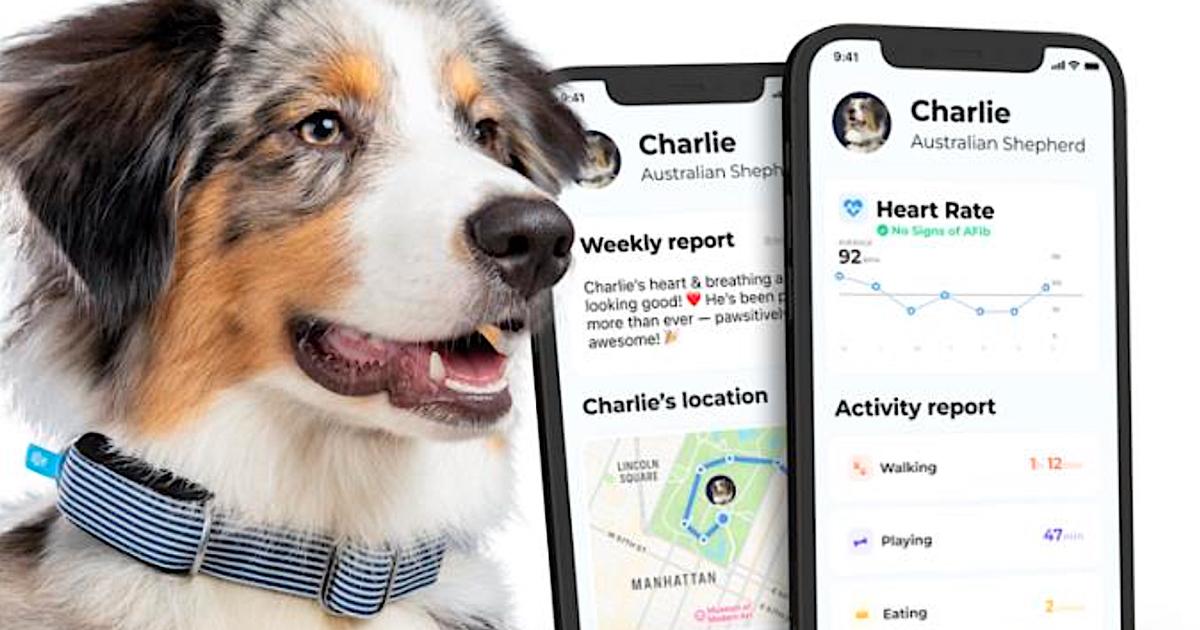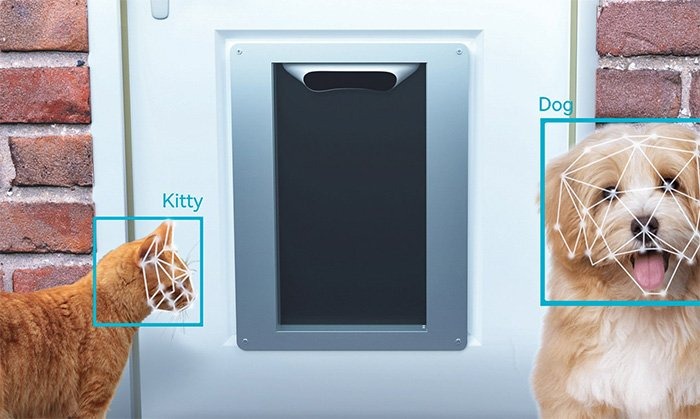
Pet Tech 2025: Smart Collars, GPS Tags, and AI Health Trackers.
In 2025, pet technology is transforming the way we care for our animal companions, combining AI, smart collars, GPS trackers, and health monitoring devices to ensure safety, health, and well-being. These innovations allow owners to track location, analyze behavior, predict illnesses, and strengthen emotional bonds, creating a future where pets are healthier, safer, and more connected than ever before.
🐶 Pet Star
57 min read · 22, Oct 2025

Pet Tech 2025: Smart Collars, GPS Tags, and AI Health Trackers.
Pets have long been considered members of the family, and as technology advances, so does our ability to ensure their well-being. In 2025, pet technology—or “pet tech”—has emerged as one of the fastest-growing sectors in the global smart device market. This evolution is not merely about convenience or novelty; it’s about fundamentally transforming how we monitor, care for, and communicate with our animal companions. With the integration of artificial intelligence (AI), wearable devices, and real-time data analytics, tools like smart collars, GPS tags, and AI-driven health trackers are setting new standards in pet care.
The Pet Tech Revolution: A Growing Industry
The global pet tech industry has experienced explosive growth over the past decade. According to recent market analyses, the industry is projected to exceed $25 billion by 2027, with 2025 marking a major turning point in innovation and adoption. As pet ownership rates climb—especially among millennials and Gen Z—owners are increasingly turning to technology to ensure their pets’ health, safety, and happiness.
The COVID-19 pandemic further accelerated this trend. During lockdowns, millions of people adopted pets for companionship, and as remote work became the norm, owners wanted to stay connected with their pets even when away from home. This new demand led to a wave of innovations designed to bridge the gap between pet and owner through smart devices.
1. Smart Collars: The Heart of Connected Pet Care
At the forefront of the pet tech revolution are smart collars—multifunctional devices that combine location tracking, activity monitoring, and health data collection in one wearable gadget. Much like a smartwatch for humans, these collars track vital metrics such as heart rate, respiratory rate, sleep patterns, and calories burned.
Key Features in 2025 Smart Collars:
- GPS and Geofencing: Advanced smart collars now use multi-satellite GPS systems (like GLONASS and Galileo) for real-time tracking with accuracy within a few feet. Owners can set up geofences—virtual boundaries that trigger alerts if a pet strays too far.
- AI-Driven Behavior Analysis: Integrated AI systems analyze pet movements and behaviors, identifying irregular patterns that may signal illness or stress. For example, if a dog suddenly becomes less active or drinks more water than usual, the system sends an alert to the owner’s phone.
- Health Monitoring: Some collars are equipped with biosensors that can track pulse rate, temperature, and even detect potential early signs of disease such as infections or heart problems.
- Two-Way Audio and Cameras: The latest models even include tiny cameras and speakers, allowing owners to communicate with pets remotely or see what they’re doing in real time.
Leading Brands in 2025:
Whistle, FitBark, Garmin Alpha, and PetPace have been pioneers in this domain. However, in 2025, new AI-driven devices like PawSense and SmartTailor Pro have raised the bar by integrating cloud-based veterinary analytics that can automatically forward data to your veterinarian for continuous health assessment.
2. GPS Tags: Keeping Pets Safe in Real-Time
One of the greatest fears of pet owners is losing their furry friend. GPS tags have long served as a safety net, but in 2025, these devices have become more advanced, smaller, and more efficient than ever before.
How GPS Tags Have Evolved:
- Precision and Battery Life: Modern GPS trackers use energy-efficient satellite communication and advanced chipsets that can last weeks without recharging. Solar-powered variants are now available for outdoor pets.
- AI Predictive Path Tracking: These tags use historical data and machine learning to predict where a lost pet might go based on its past movements, increasing recovery rates.
- Multi-Network Connectivity: With 5G and satellite IoT integration, even pets in rural or remote areas can be tracked seamlessly.
- Waterproof and Shockproof Designs: For active dogs or outdoor cats, durability is essential. The latest designs ensure that the device functions under extreme weather conditions or underwater environments.
Innovative Uses:
Beyond locating lost pets, GPS tags in 2025 have evolved into lifestyle tools. Owners can now monitor how much exercise their dog gets daily or review “adventure logs” showing where the pet has roamed. Some devices even integrate with smart home systems—automatically opening a smart door when the pet returns home within geofence boundaries.
3. AI Health Trackers: The Future of Preventive Pet Medicine
Perhaps the most revolutionary innovation in pet tech is the rise of AI-driven health trackers. These intelligent devices go beyond tracking basic movement—they interpret complex physiological data to identify health trends and warn owners before symptoms appear.
How AI Health Trackers Work:
The devices use embedded biosensors to collect data such as heart rate variability, temperature, blood oxygen levels, and activity intensity. This data is then analyzed by AI algorithms trained on millions of veterinary health records to detect patterns associated with diseases or distress.
For instance:
- A sudden change in sleeping behavior might signal arthritis pain.
- Consistent scratching could indicate allergies or skin conditions.
- Variations in breathing rate might suggest respiratory problems or stress.
These trackers can also integrate with AI veterinary platforms that offer real-time consultations. If an anomaly is detected, the system can notify the owner and recommend scheduling an appointment with a vet or even initiate an online diagnosis.
Data and Diagnostics:
The most advanced health trackers in 2025, such as PetVitals AI and TailTrack Health, are designed to be HIPAA-compliant and synchronize data with cloud-based veterinary systems. This ensures that pet health data remains private, accurate, and useful for long-term health management.
4. The AI-Powered Pet Ecosystem
The real power of pet tech lies not in isolated devices, but in the creation of a connected ecosystem where all devices communicate with each other—and with the owner’s smartphone, smart home, and veterinary network.
For example:
- The smart collar collects data on activity levels.
- The AI health tracker interprets this data for anomalies.
- The GPS tag confirms location in case of emergency.
- All three devices sync with an AI-powered pet app that provides personalized insights, diet recommendations, and health forecasts.
Through deep learning, these systems learn each pet’s unique behavior and physiology, offering individualized care insights rather than generalized suggestions. This ecosystem approach transforms reactive pet care (responding to illness) into proactive pet health management (preventing illness before it happens).
5. Integration with Smart Homes and IoT
As smart home technology continues to expand, pets are becoming part of the Internet of Things (IoT) network. Pet feeders, litter boxes, and even pet doors now operate through connected systems.
Examples of IoT Integration:
- Smart Feeders: AI-controlled feeders dispense precise portions of food based on calorie needs and weight goals, preventing obesity—a major issue in domestic pets.
- Smart Litter Boxes: Sensors monitor waste for signs of urinary tract infections or diabetes, automatically sending alerts to the owner’s smartphone.
- Pet Cameras with Emotion Recognition: Advanced computer vision tools can analyze your pet’s body language and expressions, providing insights into mood and stress levels.
- Environmental Sensors: Smart homes can now automatically adjust temperature, humidity, or lighting based on a pet’s comfort preferences.
Such technologies ensure pets are not only safe and healthy but also emotionally content, reducing anxiety when owners are away.
6. The Role of Data Analytics in Pet Health
The flood of health and behavior data generated by pet tech devices has given rise to data-driven pet care. Veterinary researchers now use anonymized datasets to identify early warning signs of diseases and behavioral issues across breeds and species.
For example:
- Big data analytics can detect region-specific patterns of illness.
- AI can compare your pet’s data with thousands of similar cases to suggest preventive care.
- Long-term analytics can reveal correlations between diet, activity, and lifespan.
In 2025, companies are offering subscription-based pet health analytics services, giving owners monthly reports similar to human fitness analytics, complete with personalized insights and health forecasts.
7. Ethical and Privacy Considerations
With great technology comes great responsibility. As pet tech becomes more pervasive, concerns around data privacy, security, and ethical use of AI are rising. Pet health data—while not directly human—can still be linked to owners’ identities, making it a potential target for misuse.
Manufacturers are now adopting data encryption protocols and privacy-first designs, ensuring users have control over how their data is stored or shared. Additionally, regulators are exploring frameworks to standardize the ethical collection and use of animal biometric data.
Another emerging ethical debate revolves around AI-driven behavioral correction tools. While smart collars can deter barking or aggressive behavior, over-reliance on AI training may raise questions about autonomy, welfare, and the human-animal bond.
8. The Human-Pet Connection: Technology Enhancing Relationships
At its heart, pet tech isn’t about replacing human care—it’s about enhancing the bond between pets and owners. Technology empowers people to understand their pets’ needs better, ensure their safety, and provide timely medical attention.
Owners can now travel without guilt, knowing their pets’ wellbeing is monitored remotely. Elderly or busy individuals benefit from automated systems that maintain feeding schedules and detect potential emergencies. For veterinarians, continuous data streams provide more accurate diagnoses and preventive recommendations.
In essence, technology is humanizing pet care by bridging the communication gap between species.
In 2025, the world of pet care has undergone a technological renaissance, ushering in an era where smart collars, GPS tags, and AI-powered health trackers are no longer futuristic novelties but essential tools for every conscientious pet owner, as advancements in artificial intelligence, the Internet of Things, and wearable technology converge to create a fully connected ecosystem that monitors, interprets, and responds to the needs of pets in real time, transforming how humans interact with their animal companions, and ensuring that pets are not only safe but also healthier and happier than ever before, and at the heart of this transformation lies the smart collar, a sophisticated device equipped with GPS systems that allow for pinpoint location tracking with a precision previously thought impossible, utilizing not only the American GPS constellation but also satellite networks such as GLONASS and Galileo, while also incorporating geofencing capabilities that alert owners when a pet strays outside a defined safe zone, effectively preventing lost pets and providing peace of mind to families, while simultaneously collecting comprehensive data on a pet’s daily activity levels, movement patterns, and behavioral tendencies, which is then analyzed through integrated AI algorithms capable of detecting deviations from normal behavior that could indicate stress, illness, or injury, allowing owners to act proactively rather than reactively, and when paired with AI health trackers, these devices transcend simple monitoring to provide predictive health insights, as biosensors embedded in collars or tags measure vital signs such as heart rate, respiratory rate, body temperature, and sleep quality, feeding the data into machine learning systems that compare each pet’s metrics against vast databases of veterinary health records, identifying subtle warning signs of conditions ranging from arthritis and obesity to heart disease and respiratory disorders long before they become clinically apparent, thereby enabling preventive care, early interventions, and continuous health management, and the innovation does not stop there, as GPS tags have evolved to offer multi-network connectivity, incorporating 5G, LoRa, and satellite IoT protocols to ensure that pets can be tracked even in remote or rural areas where traditional networks fail, while predictive algorithms can anticipate a pet’s likely movements based on historical data, improving recovery chances in case of escape or loss, and the devices themselves have become more durable, lightweight, waterproof, and shockproof, capable of withstanding the active lifestyles of dogs, cats, and other animals, while some even include two-way audio, miniature cameras, or vibration alerts, allowing owners to communicate with their pets or check their surroundings remotely, thereby enhancing safety and emotional connection simultaneously, beyond monitoring, pet tech in 2025 has embraced the concept of an integrated smart ecosystem, where wearable devices, feeders, litter boxes, and environmental sensors all communicate within a unified platform, enabling automatic adjustments to food portions based on AI-calculated caloric needs, monitoring waste for signs of urinary or digestive issues, or controlling environmental conditions like temperature, humidity, and lighting to optimize a pet’s comfort and well-being, with cloud-based applications providing owners with detailed analytics, personalized recommendations, and even tele-veterinary consultations when anomalies are detected, creating a comprehensive, data-driven approach to pet care, and as big data becomes increasingly central, veterinary researchers are leveraging anonymized pet health metrics to identify trends, breed-specific susceptibilities, and early warning signs for diseases on a population level, while pet owners gain unprecedented insight into their own pets’ health patterns, lifestyle, and emotional state, enabling interventions that are both precise and timely, and yet, with these advancements come considerations of privacy, security, and ethics, as the biometric and behavioral data collected by these devices are often sensitive and potentially exploitable, prompting manufacturers to adopt robust encryption, secure cloud storage, and privacy-first policies, while debates around AI-driven behavior correction tools raise questions about autonomy, welfare, and the nature of human-pet interaction, emphasizing that technology must complement rather than replace human care and empathy, and ultimately, the greatest triumph of pet tech in 2025 is not merely in its ability to track or monitor but in its capacity to deepen the human-animal bond by providing owners with actionable insights, reducing stress and anxiety for both parties, ensuring safety in real-time, and transforming routine pet care into a sophisticated, holistic, and proactive practice that blends compassion with science, making pets healthier, happier, and more understood than ever before, and while the devices themselves—from smart collars like PetPace, Whistle, and PawSense, to AI-powered health trackers such as PetVitals AI, and GPS innovations—offer individual benefits, the true power lies in the ecosystem approach, where real-time data, AI analysis, and connected smart devices converge to create an environment in which every movement, heartbeat, and behavioral nuance of a pet can be observed, analyzed, and acted upon, ensuring that owners are always informed, pets are always safe, and the future of animal care is defined by intelligence, empathy, and technology working together to elevate the quality of life for every companion animal.
In 2025, the world of pet care has been transformed by an unprecedented wave of technological innovations, with smart collars, GPS tags, and AI-powered health trackers becoming essential tools for pet owners who are seeking to ensure the safety, well-being, and happiness of their animal companions in ways that were unimaginable just a few years ago, as these devices combine sophisticated sensors, advanced analytics, and real-time communication to monitor every aspect of a pet’s health and behavior, from physical activity and sleep patterns to vital signs such as heart rate, respiratory rate, and body temperature, enabling owners to detect subtle changes that could indicate illness, stress, or injury before they become critical, and at the heart of this transformation are smart collars, which function as highly intelligent wearables, integrating GPS tracking for precise location monitoring that leverages global satellite systems like GPS, GLONASS, and Galileo, along with geofencing capabilities that send instant alerts to owners if a pet leaves a predefined safe area, thus preventing loss and providing unparalleled peace of mind, while the collars also collect comprehensive activity data, which is analyzed using AI algorithms to identify unusual behavioral patterns, such as decreased movement, excessive scratching, or irregular sleep, which could suggest health problems ranging from obesity and arthritis to infections and cardiovascular issues, and in combination with AI health trackers, these collars form a sophisticated network that continuously assesses a pet’s condition, providing predictive insights and preventive guidance, with the AI systems trained on millions of veterinary health records to recognize correlations between behavior, physiological metrics, and disease progression, thereby allowing owners to act proactively, schedule veterinary consultations earlier, and implement lifestyle or dietary interventions that improve outcomes, while GPS tags have evolved beyond basic tracking devices to become highly accurate, durable, and energy-efficient tools capable of operating across multiple networks, including 5G, LoRa, and satellite IoT, ensuring that pets can be located even in remote or rural areas, and with predictive AI features that anticipate likely movement patterns based on historical data, recovery rates for lost pets have dramatically improved, with tags also featuring long-lasting batteries, waterproof designs, and shockproof construction to withstand the rigorous activities of dogs, cats, and other pets, some even including two-way audio, cameras, and vibration alerts that allow owners to remotely communicate with pets or monitor their immediate environment, thereby enhancing both safety and emotional connectivity, while the integration of pet tech into smart home ecosystems further extends its capabilities, as feeders, litter boxes, environmental sensors, and doors can all connect to a unified platform, allowing automatic portion-controlled feeding, monitoring of waste for health anomalies, adjustment of ambient conditions like temperature, humidity, and lighting to optimize comfort, and tracking of environmental stressors, all while synchronizing data to cloud-based applications that provide detailed analytics, personalized recommendations, and real-time alerts, even facilitating tele-veterinary consultations when irregularities are detected, and this connected ecosystem approach enables proactive health management rather than reactive care, transforming how owners understand and respond to their pets’ physical and emotional needs, with big data analytics playing a crucial role by allowing veterinary researchers to identify breed-specific susceptibilities, region-based disease trends, and early warning signs of illnesses across populations, while individual pet owners receive insights tailored to their own animals, such as activity summaries, health forecasts, and behavior analysis, which empower them to make informed decisions about diet, exercise, and medical care, and yet, as these technologies proliferate, issues surrounding privacy, security, and ethics have emerged, as the biometric and behavioral data collected can be sensitive, prompting manufacturers to adopt encryption, secure cloud storage, and privacy-first protocols to protect users, while debates have arisen around the ethical use of AI-driven behavioral modification tools, with experts emphasizing that such technology should augment rather than replace human oversight, empathy, and direct care, ensuring that pets maintain autonomy and welfare are preserved, and the human-pet bond is strengthened rather than diminished, and ultimately, the true value of pet tech in 2025 lies in its ability to create a seamless connection between pets, owners, and veterinarians, enabling real-time monitoring, predictive health analysis, and continuous feedback that improves quality of life, reduces anxiety for both pets and owners, and allows for a more nuanced understanding of animal behavior and needs, with devices like smart collars from PetPace, Whistle, and PawSense, GPS trackers with predictive AI features, and AI health monitors like PetVitals AI setting new benchmarks in accuracy, reliability, and usability, while cloud-based analytics platforms aggregate and interpret this data to deliver actionable insights, turning pet care into a sophisticated, proactive, and personalized practice, ultimately transforming the way humans care for their companions by blending technology, science, and empathy in a way that ensures every pet’s health, safety, and happiness are continuously monitored, understood, and enhanced, creating a future where the well-being of animals is safeguarded not just by human attention, but by intelligent systems capable of anticipating needs, detecting potential problems, and facilitating interventions that preserve life, improve health, and deepen the emotional bond between pets and their owners, making 2025 the year when pet technology finally fulfills its promise of combining cutting-edge innovation with compassionate care to elevate pet welfare to unprecedented levels.
Conclusion
The future of pet care lies in smart technology that listens, learns, and protects. By 2025, the convergence of AI, GPS, and biometric tracking has made it possible to understand pets’ needs as never before. These devices not only save lives but strengthen emotional bonds by giving pets a voice through data. The next generation of pet owners won’t just own pets—they’ll connect with them on a technological and emotional level, ensuring that love and science go hand in paw.
Q&A Section
Q1:- What is Pet Tech 2025 all about?
Ans:- Pet Tech 2025 refers to the integration of AI, smart wearables, and IoT devices to improve pet health, safety, and communication. It includes technologies like smart collars, GPS trackers, and AI health monitoring systems designed to keep pets connected, healthy, and secure.
Q2:- How do smart collars work for pets?
Ans:- Smart collars track location, activity, and vital health statistics like heart rate and temperature. They use GPS and AI algorithms to detect unusual behavior patterns, helping owners identify potential health or safety issues early.
Q3:- Are GPS pet trackers reliable in 2025?
Ans:- Yes. Modern GPS tags use satellite and 5G connectivity for real-time, highly accurate tracking. Many also feature predictive AI that anticipates where a lost pet might go, increasing recovery rates dramatically.
Q4:- How do AI health trackers benefit pets?
Ans:- AI health trackers collect and analyze biometric data to detect early signs of disease or discomfort. By continuously monitoring factors like sleep, movement, and heart rate, they enable preventive healthcare and faster veterinary interventions.
Q5:- Are there privacy risks with pet tech devices?
Ans:- While modern devices employ encryption and privacy controls, data security remains an ongoing concern. Responsible companies are addressing these issues by allowing users full control over their data and ensuring ethical AI use.
Similar Articles
Find more relatable content in similar Articles

How Climate Change Affects Wild and Domestic Animals...
Climate change is dramatically.. Read More

How Pets Strengthen Family Bonds...
Pets are more than just compan.. Read More

Sustainable Pet Products: What to Look for in 2025...
As sustainability becomes a ce.. Read More

Smart Homes for Pets: Automated Feeders, Doors, and Mo..
As smart home technology advan.. Read More
Explore Other Categories
© 2024 Copyrights by rPets. All Rights Reserved.